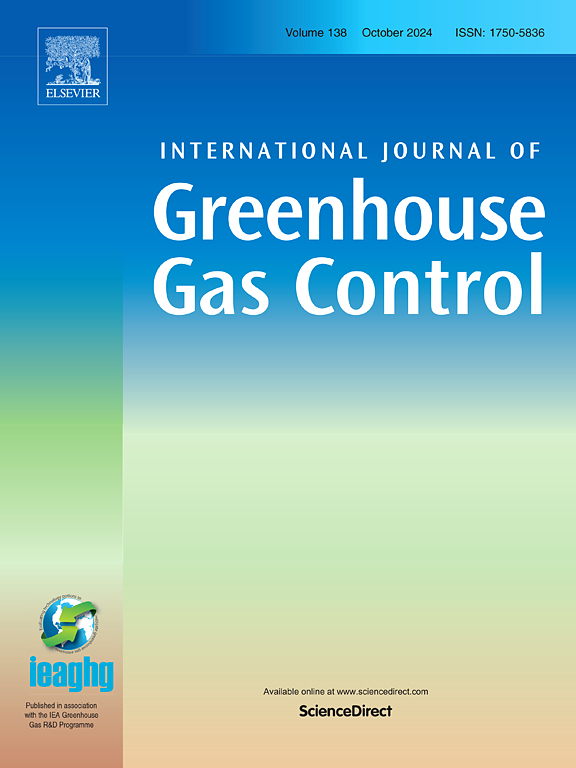The financial implications of injectivity risk in compartmentalized storage formations for geologic carbon sequestration
IF 5.2
3区 工程技术
Q2 ENERGY & FUELS
International Journal of Greenhouse Gas Control
Pub Date : 2025-09-20
DOI:10.1016/j.ijggc.2025.104463
引用次数: 0
Abstract
Maintaining injectivity over the planned duration is a major driver of risk in CO storage projects. Current insurance considerations are largely focused on leakage and well remediation, while operational issues from past carbon storage projects have shown injectivity issues due to unanticipated formation compartmentalization is a real risk. The financial penalty due to the disruption of injection operations is large for a site operator. This study explores the effect of storage compartment size and geologic boundary condition on injectivity, and the subsequent financial implications. Risk profiles of injectivity are generated through reservoir simulations constrained by statistics from a CO storage prospect on the Gulf Coast. A financial tool is built to understand the impact on project value when an injectivity issue occurs and an offset well needs to be drilled. We observe that even in relatively closed boundary conditions, pressure arising from the CO injection can dissipate in the formation to allow injection over the project life. The economic feasibility of a storage project that does face an injectivity issue depends on the year of the injection issue occurrence. This study helps understand the injectivity risk, project contingency, and the financial feasibility of mitigation options required to establish robust assurance against this risk.
地质碳封存区隔储层注入风险的财务影响
在计划持续时间内保持注入能力是二氧化碳封存项目风险的主要驱动因素。目前的保险主要集中在泄漏和油井修复上,而过去碳储存项目的运营问题表明,由于意外的地层分隔导致的注入性问题是真正的风险。对于现场作业者来说,由于注入作业中断而造成的经济损失是巨大的。本研究探讨了储层尺寸和地质边界条件对注入能力的影响,以及随后的经济影响。注入风险概况是通过油藏模拟得出的,受墨西哥湾沿岸二氧化碳封存前景统计数据的约束。当发生注入问题,需要钻一口邻井时,建立了一个财务工具来了解对项目价值的影响。我们观察到,即使在相对封闭的边界条件下,二氧化碳注入产生的压力也会在地层中消散,从而在整个项目生命周期内允许注入。面临注入问题的储能项目的经济可行性取决于注入问题发生的年份。本研究有助于了解注入性风险、项目偶然性以及建立针对该风险的可靠保证所需的缓解方案的财务可行性。
本文章由计算机程序翻译,如有差异,请以英文原文为准。
求助全文
约1分钟内获得全文
求助全文
来源期刊
CiteScore
9.20
自引率
10.30%
发文量
199
审稿时长
4.8 months
期刊介绍:
The International Journal of Greenhouse Gas Control is a peer reviewed journal focusing on scientific and engineering developments in greenhouse gas control through capture and storage at large stationary emitters in the power sector and in other major resource, manufacturing and production industries. The Journal covers all greenhouse gas emissions within the power and industrial sectors, and comprises both technical and non-technical related literature in one volume. Original research, review and comments papers are included.

 求助内容:
求助内容: 应助结果提醒方式:
应助结果提醒方式:


